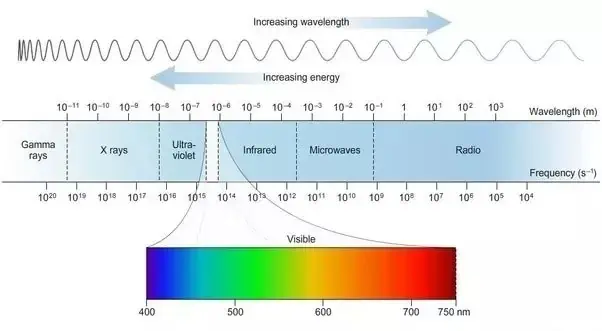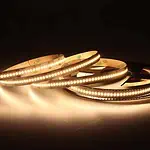Turn on the outdoor lights after sunset, and dozens, if not hundreds, of flying bugs, will gather in unison. The lights attract moths, flies, giant mosquitoes, mayflies, beetles, and all sorts of bugs. Frogs and other bug-feeding critters will be waiting at the door to feast on them. Bugs are attracted to light called phototropism.
Most bugs have phototaxis, but some have positive phototaxis, and some have negative phototaxis. Simply put, positive phototaxis means that some bugs will actively approach the light source. On the other hand, negative phototaxis is the opposite, with bugs actively moving away from the light source. A typical example of positive and negative phototaxis is that many flying bugs gather around street lights at night. And these flying bugs are all positive phototaxis. In contrast, our common snails, watermelon bugs, and other animals are negative phototaxis.
There have been many studies on the correlation between light and bug presence. Marianne Shockley Cruz and Rebecca Lindner from the University of Georgia’s Department of Entomology wrote in a research paper titled “Insect Vision: Ultraviolet, Color and LED Light“. The experimental work supports the existence of color perception in bugs, And bugs are susceptible to the shorter wavelengths of visible and ultraviolet light.” Wavelengths are measured in nanometers, and shorter light waves (less than 550 nanometers) can represent ultraviolet (UV), blue, or green. Cruz and Lindner also cite work demonstrating a relationship between ultraviolet light from the sun and moon and how specific bugs navigate Earth. Another thing to remember about bugs is that specific bugs, like mosquitoes, are attracted to heat and have thermoreceptors to help them find it. All of this information helps determine why bugs flock to particular light sources.
Wavelengths and color temperature:
The color of the light source is important because it attracts bugs. As mentioned earlier, shorter wavelengths (ultraviolet, blue, and green) are more visible to bugs than longer wavelengths (yellow, orange, and red). It is important to remember that most bugs cannot see the light in the range of 650 nanometers (yellow). Bugs use the ultraviolet and infrared light spectrum to navigate and locate food. Since different bugs can see different wavelengths of light, and many are attracted to heat, bug lights are never 100% effective. Still, they reduce bug populations by excluding most bugs’ light. Ultraviolet radiation from incandescent, compact fluorescent (CFL), halogen, and high-intensity discharge lamps is attractive to bugs. Since some bugs navigate by ultraviolet light from the sun and moon, a closer, brighter ultraviolet light source can disturb the direction of bugs and attract them. LEDs produce very little or no UV light, making them less visible to bugs. However, LEDs can still have shorter light wavelengths (blue-white/cool white), which are more attractive to bugs. Therefore, when choosing LED strips, it is important to choose LED strips that emit more light at wavelengths above 550 nanometers, such as warm white, super warm white, or yellow.

Heat
Most of the energy (up to 90%) consumed by incandescent, halogen, CFL, and HID light bulbs is heat. Bugs with thermoreceptors can feel the heat released by these light sources. LED strips generate very little heat, making them less attractive to bugs.
What kind of bugs do led strip lights attract, and what kind of bugs do led strip lights don’t attract.
1. LED Strip Lights Can Attract Spiders
Spiders are attracted to LED strip lights as this is an excellent place for them to forage at night. Spiders eat other bugs and bugs that are attracted to LED strip lights. So, if you have other bugs around your led strip lights, you should know that these bugs may be a food source for spiders, and they will join you.
How To Get Rid Of Them:
One of the most effective ways to get rid of them is to put a chemical called DEET around your LED strip lights or anywhere else. This product is so effective that you can spray it around or buy a repellent that contains DEET.
Another way to get rid of spiders is to place sticky traps near your LED strip lights, where spiders often haunt.
A chemical-free way to get rid of spiders is to place natural items like grapefruit peel, peppermint oil, or cinnamon around lights.
2. LED Strip Lights Can Attract Wasps/Hornets
Wasps and Hornets are also attracted to LED strip lights because they provide a good food source. Wasps/Hornets can catch other bugs and bugs, especially those attracted to LED strip lights. So, if you have wasps or hornets near your LED strip lights, you should know that they can catch other bugs. Just like spiders, wasps and Hornets eat other bugs attracted to LED strip lights. So if you have other bugs around your led strip lights, don’t be surprised to find wasps and Hornets on them as well.
How To get rid of them:
You have many ways to kill wasps and hornets or drive them out of your led strip lights. One of the most effective methods is DEET. Another effective way to kill wasps and hornets is to spray with permethrin, which can be found in repellents. If you don’t want to use chemicals, you can place sticky traps around to catch them. Another chemical-free method is to kill wasps and hornets with water or vinegar. This method works by putting water or vinegar in a spray bottle and spraying wasps and hornets.
3. LED Strip Lights Can Attract Bees
It’s rare for bees to be attracted to LED strip lights, but it’s also possible because these lights sometimes trigger phototactic responses on the bee’s front.
The phototaxis response of bees refers to the tendency of bees to orient themselves in the direction of a light source.
So if you have bees wandering around your led strip lights, chances are it’s because of the lights.
How To Get Rid Of Them:
You can turn off the lights for a while for bees and see if they go away.
If the bees still don’t leave, then you can try spraying them with water or blowing them away with a fan.
I don’t recommend killing bees with chemicals because bees are essential for pollination. If you need to remove them because you are allergic, spray with water or use a fan, and they will go away.
4. LED Strip Lights Can Attract Flies
LED strip lights can also attract flies and other bugs such as moths. This is because these bugs are usually attracted to bright lights. The navigation system also gets messed up when close to the LED strip. This is because they mistook the lights for sunlight or moonlight and started flying towards them. This means they end up being attracted to the light.
How To Get Rid Of Them:
There are many ways to get rid of flies hanging from your LED strip lights. One of the most effective methods is to use fly traps near these bugs, as they are attracted to light. Another effective method is to use tape, which will have the same effect as a flytrap since flies are attracted to glowing objects.
5. LED Strip Lights Can Attract Centipides
If you see centipedes around your led strips, they are probably there for several other existing bugs. Centipede, similar to spiders, are attracted to LED lights because their prey is readily available.
In this case, the centipede will seek out other bugs attracted to the LED light. This is because they eat a lot of bugs and other bugs.
How To Get Rid Of Them:
Centipede bites can be painful, so getting rid of them safely and effectively is important.
There are plenty of ways to get rid of those centipedes dangling around your LEDs.
One of the most effective methods is to use borax powder, which kills centipedes because it interferes with the centipede’s exoskeleton. You can also use diatomaceous earth or sodium borate, which works similarly to borax.
Another effective method is to use traps that you can create yourself or buy online. One of the most effective ways to get rid of centipedes is to use a glue trap.
6. LED Strip Lights Can’t Attract Cockroaches
LED strip lights are unlikely to attract cockroaches. This is because cockroaches are usually attracted to damp and dark places, which makes LED lights not a good choice for them.
7. LED Strip Lights Can’t Attract Bed Bugs
Bed bugs are unlikely to be attracted to LED lights or any other type of light, as they are usually found in dark places. They like to hide in beds, clothes, sheets, curtains, and other dark places.
8. LED Strip Lights Can’t Attract Ants
Ants are attracted to UV light, which LED strip lights do not produce. Ants are generally attracted to food, water, and warmth, which is why they may not be attracted to LED lights because the heat of the light is not enough to attract them.
Summarize:
Because different types of bugs see different wavelengths, there is no guarantee LED strips won’t attract them. However, most bugs are attracted to short wavelengths of light, incredibly UV light; they can see better, and some use UV light to navigate. LED strips that emit shorter wavelengths of light (cool white/light blue) will attract more bugs. Emits the longer wavelengths of light (yellow/orange/red) less visible. The heat can also attract bugs to one spot. LED strips produce little or no UV light, have minimal heat and don’t attract bugs as long as they emit longer wavelengths of light.
LEDYi manufactures high-quality LED strips and LED neon flex. All of our products go through high-tech laboratories to ensure the utmost quality. Besides, we offer customizable options on our LED strips and neon flex. So, for premium LED strip and LED neon flex, contact LEDYi ASAP!





